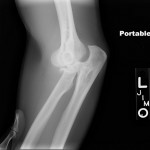 RSS FEED
RSS FEED
Archive for the ‘Managing’ Category
Blue Tuesdays
April 20th, 2010
On Tuesdays there are staff meetings at my new office, at 8:30 a.m. That may not be ridiculously early, but  it means I have to be up at 7 and racing through my morning to get there on time. The nortriptyline I take as a Migraine preventive makes me good and sleepy, and it’s hard to wake up and move on less than 9 hours of sleep. Today I not only had to be awake but to give a little presentation at the meeting on using Facebook and Twitter for business. I am relearning some things I used to know, like how to get up and go even when I don’t feel up to it. How to push myself through times when my focus isn’t there, or I’m a bit fatigued, or to work with a triptan in my system.
it means I have to be up at 7 and racing through my morning to get there on time. The nortriptyline I take as a Migraine preventive makes me good and sleepy, and it’s hard to wake up and move on less than 9 hours of sleep. Today I not only had to be awake but to give a little presentation at the meeting on using Facebook and Twitter for business. I am relearning some things I used to know, like how to get up and go even when I don’t feel up to it. How to push myself through times when my focus isn’t there, or I’m a bit fatigued, or to work with a triptan in my system.
Don’t get me wrong, this new job wouldn’t even be happening if my Migraine prevention regimen weren’t working quite well. My Migraines went down by about 60% in the months before I started the job. The challenges of the work routine have them back up a little again, but it’s still significant progress. If I had tried to take on the challenges of this job a year ago, I doubt I could have done it.
I also work an 8 1/2 hour day on Tuesdays and Thursdays because Monday and Friday are my short days and Wednesdays are a day off. That’s just the way we worked out for me to work a 25 hour week. It makes those long days challenging, though. If I don’t sleep well the night before (like last night) and I still go put in a full day, it can lead to an evening Migraine. Right now I am lying down with the laptop, writing to you all after dinner, with a bit of a headache. Trying to see if I can contain it by resting. That works sometimes.
One of the difficulties for me is that I can’t seem to go to sleep and get up at the same time every day the way my Migraine brain demands. I need plenty of sleep, and if I went to bed early enough to make the Tuesday wake-up hour my standard, I’d never get to see my teenage kids or night-owl husband. I’d be best off if I could take a nap to even things out, I think, but short of napping in my car that’s not an option right now.
All in all, I am very grateful to have a job, to be doing professional work and helping people, to be getting some respect and recognition, and earning a living. I am grateful that I still have Wednesdays to keep working at my Migraine coaching. I had forgotten, as a self-employed person for many years, how satisfying it is to leave at the end of a work-day, knowing I had filled the day with doing my best, and that I am done for the day. I am enjoying my evenings more, and allowing myself to relax. Except that these Tuesdays are hitting me hard!
– Megan
Sleepy law student image courtesy of umjanedoan.
Tags: Migraine coaching, Migraine preventive medication, part-time work, sleep hygiene, triptans
Posted in Advocacy, Managing, Musings, Weblogs | Comments (0)
Hormones, Migraines and Menopause
February 14th, 2010
Migraines happen when those of us with excitable nervous systems – nervous systems prone to Migraine –  experience a change in our external or internal environment that triggers the Migraine process. This doesn’t explain what causes Migraine, or why some of us have nervous systems that react like this. It just describes the process. Hormonal fluctuations are one of the internal changes that can trigger a Migraine. Migraines are not “caused” by hormonal fluctuations, but hormones can be a big factor for many Migraine sufferers. One theory about why more Migraine sufferers are female, by a proportion of 3 to 1, is that the fluctuations of our hormonal cycles make us more susceptible. Interestingly, up to puberty the numbers of male and female Migraine sufferers are more even; many more girls join the ranks with the onset of puberty.
experience a change in our external or internal environment that triggers the Migraine process. This doesn’t explain what causes Migraine, or why some of us have nervous systems that react like this. It just describes the process. Hormonal fluctuations are one of the internal changes that can trigger a Migraine. Migraines are not “caused” by hormonal fluctuations, but hormones can be a big factor for many Migraine sufferers. One theory about why more Migraine sufferers are female, by a proportion of 3 to 1, is that the fluctuations of our hormonal cycles make us more susceptible. Interestingly, up to puberty the numbers of male and female Migraine sufferers are more even; many more girls join the ranks with the onset of puberty.
It’s hard to generalize with this disease; people are triggered by so many different things. Some women don’t notice any particular effect of hormones on their Migraines, others seem to be only triggered by hormones, and for some hormones are one of a host of possible triggers. That said, it is common for women to experience an increase in Migraines during peri-menopause, the period of years leading up to menopause when their hormonal levels are changing, and often beginning to drop off.
I had a sharp increase in Migraines, as well as onset of fibromyalgia, and increase in IBS as I moved into peri-menopause. I have found a bio-identical, bio-mimetic hormone replacement therapy which I believe has helped my overall health quite a bit. I started the program about 4 years ago. It has not had a noticeable effect on the number of my Migraines but has definitely decreased their severity. It has given me more energy and stamina overall, which has helped keep the fibromyalgia fairly mild, I believe. It also did away completely with many symptoms of menopause that were troubling me – hot flashes, night sweats, anxiety, insomnia, vaginal dryness. The program I use is known as The Wiley Protocol.

T.S. Wiley is a cancer researcher who hit on this method of replacing hormones in a pattern that mimics the hormonal patterns of a normal menstrual cycle. Her book, Sex, Lies and Menopause explains in great detail the effects of hormones on our bodies, on aging, and how she developed her protocol.
As I understand it, pharmaceutical HRT (hormone replacement therapy) chemically creates molecules which are similar to, but not identical to, the hormones our bodies produce. If the pharma companies are not inventing a new substance, they can’t patent it or make much money from it, so you don’t find these hormones advertised widely. Bio-identical HRT chemically synthesizes the exact same molecule our bodies produce, so that when we use it our bodies treat it as if we had produced it ourselves. Bio-identical HRT is made by compounding pharmacists. There are many producers of bio-identical HRT, some of them prescribe a constant level of the hormones to be used all the time. The drastic side-effects and health complications that come with pharmaceutical HRT are caused, Wiley says, by the fact that these are not molecules our bodies recognize, as well as by the fact that the hormones are dosed at a constant level which is not normal for our bodies. Bio-identical HRT can also cause problems when dosed at a constant level.
What is different about Wiley’s program is that the hormones are not just bio-identical, they are “bio-mimetic.” Wiley invented a method of dosing the hormones so they mimic the menstrual cycle of a healthy 20 year-old woman. The theory is to recreate a time when we are biologically at our healthiest, and giving our bodies the ebb and flow that is normal for them. Some women have bad Migraines when they are younger, and bad menstrual Migraines throughout their lives. I don’t know if the Wiley protocol would help them with their Migraines. But if the Migraines began or drastically increased in menopause or peri-menopause, it makes sense to me to replace the hormone levels of a time when you didn’t have the Migraines! The drawback, I suppose, is that as long as you are on the protocol you will menstruate. There are women in their 80’s on it, getting periods. But I have found that my periods on the protocol are very regular and fairly painless. The horrid PMS and menstrual Migraines I got in my peri-menopause years are gone, as are the terrible cramps I had, both when I was young and again in recent years.
Wiley does suggest that Migraines can be treated by spreading the hormones more evenly throughout the day, instead of just in the usual morning and evening doses. I have not tried this – it makes a certain degree of sense, in evening out any hormonal fluctuations during the day. Hormones do not seem to be the only thing that triggers my Migraines, though. If you read Wiley’s book or visit the site you might get the impression that the protocol is a panacea for all problems of aging. I don’t know if I buy into it that far, and as I said it has not been a complete solution for my Migraines. It has definitely made a big difference for me, though, and you may want to investigate it as a useful component of your toolkit.
Neither T.S. Wiley nor the Wiley Protocol has given me any payment for reviewing these products. If you click on the link to the book and buy it from Amazon, however, I will receive a small referral fee.
Tags: bio-identical hormone replacement, Hormones, Menopause, migraine, Migraine triggers, T.S. Wiley
Posted in Books, Managing, Medicine | Comments (1)
Happy New Year!
February 12th, 2010
What? It’s 43 days into 2010!
 I know, but I haven’t posted since January 7th; I feel like I need to catch up with you all. Greetings from snow-bound New Jersey!
I know, but I haven’t posted since January 7th; I feel like I need to catch up with you all. Greetings from snow-bound New Jersey!
I just saw that Medical Assistants.Net listed me as “One of the Top 50 Health and Wellness Blogs to Watch in 2010.” If that’s the case, I’d better get writing!
It’s been a busy month and a half for me. I have returned to my professional roots and taken a half-time job as a lawyer. I love working with you all to help you manage your Migraines, but it’s not keeping me busy full-time. I’m lucky to have a good set of skills to return to, and a great firm owner who knows me, likes my work, and is very flexible about my health needs.
I haven’t missed a day for a Migraine yet, though I have to admit I’ve had a few let-down Migraines after busy days at work. I am adjusting to a new schedule. That takes some time for a Migraineur – our systems crave regularity, and tend to freak out when we change things up on them. It took a few weeks to build enough stamina to have energy left for the other things I do. I am very glad that my preventive medication works well for me, and that my years of practice in managing my Migraines have given me the breathing and relaxation skills to get me through.
When I left the practice of law in 2000 I thought I’d never be able to go back to the pace and demands without frequent Migraines. I’m happy to report that my Migraines haven’t increased at all. Even better, I seem to have a reputation around the office as a calm person and a calming influence. That would have shocked those who knew me a few decades ago! Learning to manage Migraines, to keep my system on even keel, has left me knowing not to sweat the small stuff, and yes, most things are small stuff.
I owe all my subscribers a newsletter, and I am backed up with a couple of book reviews I want to give you. I have some stories about medication allergies for you and some great new products to link to. The Migraine Support & Coaching Group is going well, and I’d love to have more of you to talk to in the meetings! I think I’ve got my new rhythm down enough to be back and talk to you more often.
I hope your winter is going well. Let me know how you’re doing!
– Megan
Tags: health and wellness blogs, let-down Migraine, managing life with migraine, Migraine preventive medication, migraine support group
Posted in Communicating, Managing, Weblogs | Comments (5)
Fibromyalgia – a New Context
January 7th, 2010
The context in which we look at an issue can make a huge difference in our way of perceiving and interacting with the issue. When I began exploring the on-line world of support for Migraineurs and chronically ill folks, I came very early upon Teri Robert’s site, Help for Headaches, and there on the site, she had this badge: 
I wondered at the time, was this really empowering, to emphasize having a disease? It is a disease, but we can have an impact on our own health by developing an awareness of our own systems, and learning to relax and calm their reactivity. I had spent some years learning that myself and that’s what I wanted to share with others.
The more I looked at it, though, the more I got Teri’s point. I realized that for the many of us who have had our condition minimized and scoffed at, the recognition that we have a disease is empowering. Our problems are real, and biologically based; our pain is real. We live with the consequences of having a hyper-reactive nervous system. For those of us who have wondered what was wrong with us, if we were crazy, if we were somehow bringing the pain upon ourselves, it is empowering to recognize that we have a disease, not just a headache! Starting from the context of a disease, we can learn about it, learn what impacts our disease for better or worse, learn to manage the disease, and to manage our life with the disease. Acceptance is the first step, and gives us a foundation to build on. It makes it possible to move forward. We can say, “Okay, I have this disease. Now what? What am I going to do about it?”
For over 15 years, since I was pregnant with my son in the fall of 1994, I have been living with fatigue, lassitude, body aches, on and off difficulty concentrating, frequent sinus infections, difficulty fighting off  disease, and, in the last 10 years, ever increasing Migraines. I have gone down many paths to address these issues. With regard to the Migraines, I learned a great deal about the disease, worked with doctors to find medication and supplement combinations that helped me, and learned to practice relaxation to calm my system. My Migraine frequency is down considerably. Not so the fatigue and general pain issues, however. I have tried many different nutritional regimens, and learned a lot about what foods are most helpful to my body. I have gone great lengths to balance my hormones, and have definitely seen an improvement in my overall health and stamina through doing that. No matter what I did, however, the fatigue and pain issues did not change much.
disease, and, in the last 10 years, ever increasing Migraines. I have gone down many paths to address these issues. With regard to the Migraines, I learned a great deal about the disease, worked with doctors to find medication and supplement combinations that helped me, and learned to practice relaxation to calm my system. My Migraine frequency is down considerably. Not so the fatigue and general pain issues, however. I have tried many different nutritional regimens, and learned a lot about what foods are most helpful to my body. I have gone great lengths to balance my hormones, and have definitely seen an improvement in my overall health and stamina through doing that. No matter what I did, however, the fatigue and pain issues did not change much.
Many people with Migraine also have Fibromyalgia, and as I got to know more people with Migraine I heard a lot about the other disease as well. My reaction for quite a while was, “Oh, I probably have that one too, but I don’t want to know about it.” It felt overwhelming to me to have to deal with another diagnosis. I practiced active avoidance. Then I saw Dr. Young at Jefferson Headache Center and he listened to me talking about my fatigue, and he pressed the Fibromyalgia tender points, and I gained a new context. Thanks, Dr. Young!
I’m not kidding with the thanks. It was just like Teri’s badge above, the pieces of a puzzle came together. I already knew that my central nervous system had some serious processing issues, well this was just another manifestation of that. In addition to having my neurons fire off and produce Migraines in reaction to certain stimuli, I have an increased reaction to pain and exertion. If I bang my elbow, the pain moves out in ripples from the point, increasing for a time like an echo in an echo chamber. If I expend more muscular energy than usual, my muscles ache for days as if I had the flu. If I am active and push myself either physically or mentally, I have a kind of fatigue that is beyond tired; it is the bone-weary exhaustion of someone who has been pushed beyond the limits of their endurance.
I have gained a lot from the context of having another disease – Fibromyalgia. I have gained a community of  fellow sufferers, who care, who understand, whose wisdom and experience are available to me. I have gained the relief of knowing that I am not lazy, or losing my mind, or fundamentally bad, I am a person with a(nother) disease. And this context helps me to find solutions. I know now that stretching helps, and I can push myself to stretch when my muscles hurt and I really don’t want to. I know that my fatigue is not something to fight or to cover over with caffeine, but that it is a signal to rest. I know that getting some gentle exercise each day, and gradually increasing my exertion, will help me. I know that there will be better and worse days, but that each day can be handled, one at a time.
fellow sufferers, who care, who understand, whose wisdom and experience are available to me. I have gained the relief of knowing that I am not lazy, or losing my mind, or fundamentally bad, I am a person with a(nother) disease. And this context helps me to find solutions. I know now that stretching helps, and I can push myself to stretch when my muscles hurt and I really don’t want to. I know that my fatigue is not something to fight or to cover over with caffeine, but that it is a signal to rest. I know that getting some gentle exercise each day, and gradually increasing my exertion, will help me. I know that there will be better and worse days, but that each day can be handled, one at a time.
I haven’t posted for a while, and I’m glad to say that my new Migraine preventive is helping a great deal. My Migraine frequency is down by about 60% over the past few months. The medication also helps to damp down my anxiety and makes me very sleepy. It seems to increase my REM sleep, which is a sleep stage that Fibromyalgia often steals away. Sleeping better definitely impacts the Migraines; it also makes me less fatigued and less anxious. So at the same time that I have taken on this new diagnosis, Fibromyalgia, I have seen some of its symptoms decrease.
I’m learning this one. It’s a listening to my body, to my inner sense of myself, in a new way. Similar to the way I already listened, a familiar tune but in a different key, perhaps. The biggest gain from the new context is another level of self-acceptance. I am not a bad person trying to be good; I’m just a sick person learning to be as well as possible.
Tags: disease management, fatigue, fibromyalgia, migraine
Posted in Communicating, Managing, Musings | Comments (0)
How do we Celebrate and Still take Care of Ourselves?
December 14th, 2009
 For a number of years, my husband and I hosted a big post-Christmas holiday gathering for my extended family. This gathering had gone on at my parents’ house for many years prior. Each of the smaller nuclear families (mine, my siblings’, aunt & uncle & cousins’) would have their own Christmas Day at home, and then sometime afterwards everyone would get together for a big collective meal and gift-giving. Since we all live several hours apart, this would generally turn into a weekend-long extravaganza, with many people sleeping over for several nights. The part where we were all together generally involved 14 – 22 people.
For a number of years, my husband and I hosted a big post-Christmas holiday gathering for my extended family. This gathering had gone on at my parents’ house for many years prior. Each of the smaller nuclear families (mine, my siblings’, aunt & uncle & cousins’) would have their own Christmas Day at home, and then sometime afterwards everyone would get together for a big collective meal and gift-giving. Since we all live several hours apart, this would generally turn into a weekend-long extravaganza, with many people sleeping over for several nights. The part where we were all together generally involved 14 – 22 people.
My family gets along well, and while some readers may roll their eyes at the thought of so many relatives gathered, it has been a largely joyous occasion. When my parents sold their big house and moved on to an apartment and then a retirement community, my sister took on hosting Thanksgiving and we took Christmas. We cut the expense, noise, tumult and confusion of the gift giving by drawing lots for gifts to adults, and cut the cooking difficulties by doing some degree of pot-luck.
But… I went on hosting these events some years beyond  when some family and friends were questioning my ability to do it. I have been living now for about 14 years with chronic illness, and when hosting big events, there have been predictable outcomes. I would wear myself out, either with clean-up and preparation, or with running around taking care of the guests in my home, or with cooking, or with trying to keep up with the mess generated by my husband’s enthusiastic (delicious) and whirlwind cooking.
when some family and friends were questioning my ability to do it. I have been living now for about 14 years with chronic illness, and when hosting big events, there have been predictable outcomes. I would wear myself out, either with clean-up and preparation, or with running around taking care of the guests in my home, or with cooking, or with trying to keep up with the mess generated by my husband’s enthusiastic (delicious) and whirlwind cooking.
My challenged immune system would hand me an illness or infection a majority of the time. Or my sensitive nervous system would react to the added stress and noise and confusion by hitting me with a major Migraine. Or both. I would try to compensate by planning better, systematizing everything. This would both create more work for me and make my husband crazy due to my micro-managing. And then there were the crowds themselves for gift-giving or major meals, where I never do well. My head would be spinning in no time, my anxiety level would hit the roof with the noise and over-stimulation, and I would become cranky and short with people. I would spend some part of the celebration closed up in a room by myself in pain, and inevitably the guests would have to pick up a lot of the work it took to get through the weekend.
We moved four years ago to our current home, which is about 35% smaller than our last home. We did a  huge renovation on this house and part of our planning was around how to accommodate a big crowd for Christmas. The time we have been in this house, however, has been the same time period as the worst of my chronic Migraines. We hosted one Christmas two months after moving in, with many things still in boxes and the construction not quite complete. We hosted one other year. When we put many tables together to sit down for a meal, you could not leave your place at the table without 2 or 3 other people getting up as well. When we tried to open presents in the front room with the Christmas tree, some people had to stand in the next room and look on. Another year we tried doing an abbreviated gathering when some family members were away, only inviting a few others. I had mixed feelings and was not clear with everyone about this, and hurt the feelings of those left out.
huge renovation on this house and part of our planning was around how to accommodate a big crowd for Christmas. The time we have been in this house, however, has been the same time period as the worst of my chronic Migraines. We hosted one Christmas two months after moving in, with many things still in boxes and the construction not quite complete. We hosted one other year. When we put many tables together to sit down for a meal, you could not leave your place at the table without 2 or 3 other people getting up as well. When we tried to open presents in the front room with the Christmas tree, some people had to stand in the next room and look on. Another year we tried doing an abbreviated gathering when some family members were away, only inviting a few others. I had mixed feelings and was not clear with everyone about this, and hurt the feelings of those left out.
Last year, with tears and soul searching, we bowed out of hosting. We went to my sister’s for two big holiday gatherings, and we’ll be doing it again this year. My home will stay quiet; our Christmas day will be simple and relaxed; we will be with family in a less stressful space. But… I miss having my family here. I miss sharing my life, my things, my space with the people I love. In answer to the title of this post, this is what we are doing to celebrate and still have me take care of myself. But… I’m running 2 weeks at a time without a Migraine these days, and have more energy, and I have to admit I am thinking about how to take the whole thing on again – maybe next year. We’ll see.
How do you celebrate and still take care of yourself?
– Megan
Tags: chronic illness, holidays, Migraines, self care, Stress
Posted in Communicating, Managing, Musings | Comments (1)
Reducing Holiday Stress – Blog Carnival
December 6th, 2009
 The theme for the December 2009 Headache & Migraine Disease Blog Carnival is “Advice on & experiences with reducing holiday season stress.” This will be the Blog Carnival’s second anniversary issue, so please consider joining in! I’ve missed the carnival myself for the past few months but I’m planning a post this time. We all know that Migraines can make our holidays much harder – let’s share how we cope! To participate just use the form on the carnival web site or contact Diana Lee over at Somebody Heal Me.
The theme for the December 2009 Headache & Migraine Disease Blog Carnival is “Advice on & experiences with reducing holiday season stress.” This will be the Blog Carnival’s second anniversary issue, so please consider joining in! I’ve missed the carnival myself for the past few months but I’m planning a post this time. We all know that Migraines can make our holidays much harder – let’s share how we cope! To participate just use the form on the carnival web site or contact Diana Lee over at Somebody Heal Me.
– Megan
Tags: blog carnival, holidays, Migraines, stress management
Posted in Managing, Weblogs | Comments (1)
How much Pain?
December 2nd, 2009
My daughter had her wisdom teeth out yesterday. Once the anesthesia wore off she started feeling pretty  serious pain. She took her first Lorcet and called me on the intercom about half an hour later, sounding panicked – she needed more pain meds, right now! We got her some ibuprofen, but tried to explain that the meds take a while to take effect, and to give it a chance. Today she is in bed with a swollen face, pain and nausea, quite miserable. We’re bringing the ice packs, the medications, the mushy food, and trying to comfort her the best we can.
serious pain. She took her first Lorcet and called me on the intercom about half an hour later, sounding panicked – she needed more pain meds, right now! We got her some ibuprofen, but tried to explain that the meds take a while to take effect, and to give it a chance. Today she is in bed with a swollen face, pain and nausea, quite miserable. We’re bringing the ice packs, the medications, the mushy food, and trying to comfort her the best we can.
I’ve been thinking about the nature of pain. At nineteen, my daughter has never had surgery before, never had a broken bone or other serious injury, and the only serious illness she has had was the chicken pox at age four. Her pain today is real and I can’t be the judge of how much pain she has. Her pain may be worse because unfamiliar. When I was her age, I had had: Migraines for at least six years, a broken arm, stitches on my face, major abdominal surgery, the mumps, the chicken pox, scarlet fever, the measles… Pain and I were old acquaintances (I won’t say friends). I have written before about how you never get used to pain. Pain is, in some ways, continuously and horribly new every time, every moment. But at the same time, pain can become familiar, and for that reason, perhaps less frightening.
 The most severe pain I can remember was when I broke and dislocated an elbow. I went into shock, I believe from the pain. Both my labors were quite painful, as I had an unproductive pattern of contractions, which came two or three in a row without pause, and each set didn’t do as much work as one normal contraction. Childbirth pains are different, I think, because any pain you experience is for something, something big and very important, and you know there is an end in sight. At twenty-nine I fell and herniated a disk and lived for years with nagging, stinging pain in my low back and right leg. I have also had Migraines where the pain was so intense I felt moment by moment as if I could not stand one moment more, where all I could do was rock myself and sob, to quote a Migraine buddy of mine. I also had my wisdom teeth out at twenty-two and I don’t remember how that pain compared, but I do remember two miserable and very drugged up days.
The most severe pain I can remember was when I broke and dislocated an elbow. I went into shock, I believe from the pain. Both my labors were quite painful, as I had an unproductive pattern of contractions, which came two or three in a row without pause, and each set didn’t do as much work as one normal contraction. Childbirth pains are different, I think, because any pain you experience is for something, something big and very important, and you know there is an end in sight. At twenty-nine I fell and herniated a disk and lived for years with nagging, stinging pain in my low back and right leg. I have also had Migraines where the pain was so intense I felt moment by moment as if I could not stand one moment more, where all I could do was rock myself and sob, to quote a Migraine buddy of mine. I also had my wisdom teeth out at twenty-two and I don’t remember how that pain compared, but I do remember two miserable and very drugged up days.
I have learned, though, that something changes when pain is familiar, when it is not mysterious. Yes, frequent severe pain is debilitating, exhausting, dis-enheartening beyond belief. But at the same time, with familiarity it can lose some of its power over us.
What do I mean by that? This is difficult to talk about. Pain is real, but at the same time our experience of it is subjective. It’s not “all in our heads” in the sense of being imagined. It is not produced by neurosis or by being weak or hysterical. But at the same time, we can change and effect our experience of pain. When my Migraines became very frequent, I learned a practice of deliberate relaxation, based in yoga, biofeedback and guided imagery. A part of the practice is to look at pain head on – to be very aware of the experience of pain. Not to fight it or try to pull away from it, but to meet it, recognize it, describe it and observe it. In that process we get some detachment from it. Sometimes we can reduce it significantly, or make it disappear. Even if that doesn’t happen, we can make it much easier to bear.
I teach these relaxation techniques to Migraineurs and others with chronic illnesses because I believe we can truly make a difference for ourselves when we learn to focus inward. I believe we should fight for better treatment, strive and work to understand and manage our own systems, but when faced with pain we must practice a kind of acceptance. I’m not talking about being a doormat or giving up. I am talking about looking the pain in the eye – saying yes, there it is, it feels like this, it is this much better or worse than any other pain, it is located here, it behaves like this. Observing it, allowing it to be and allowing it to fade.
I’m not saying this is easy. Don’t ever let anyone tell you you should “just” learn to live with it. There is no “just” about it – it’s hard and takes continual work. I use relaxation zealously in the tough times and then I slack off, and have to pick it back up and get back in practice when the next challenge comes along. Overall I have developed an awareness of my system and its ups and downs. I have less pain in my life, and the pain has less effect on me, than before I began these techniques.
There may be some kind of threshold level beyond which the rules change, or become distorted. I haven’t experienced really frequent or chronic severe pain. Six years ago my Migraine pattern suddenly increased, from a monthly menstrual Migraine plus one or two big ones a year, to three or four major Migraines a week. That was the closest I have come to experiencing truly chronic pain. And three or four times a week I felt something like the panic I heard in my daughter’s voice yesterday. Nowadays pain doesn’t panic me. I may get cranky and resentful, but sooner rather than later i say to myself, Okay here it is again. Be with what’s so, and do what I can to help it ease or pass.
I am learning a new kind of pain as I adjust to fibromyalgia. My body has become a pain amplifier, and a small pain can grow outward with ripples over a day or more until I hurt everywhere. I am having a flare-up today. I ache from head to toe. I am grateful that despite the allover aches, I don’t feel the constant severe pain I hear of from some with fibro. I am practicing what Migraines have taught me, to pace myself, to push only gently, to be with the pain, not to fight it, to know that this too shall pass.
I’m hoping for a better tomorrow, for me, for you, for my daughter. In the meantime, I will be with what’s so. My arms ache and I’m going to rest now.
– Megan
Wisdom tooth image courtesy of Steve Montgomery; broken elbow image courtesy of H Dragon.
Tags: fibromyalgia, Migraines, pain, pain levels, pain management, relaxation techniques, wisdom tooth extraction
Posted in Managing, Musings | Comments (3)
How Can we Work with Migraines?
November 5th, 2009
 disabling disorder. Migraine disease has a very real impact on our careers and our earning capacity. Many of us find we cannot keep up with the schedule, or the stress, or the intellectual demands, of our former jobs. Maybe we can’t work full-time hours, but we can still do productive work. Some of us are partly disabled, or mostly disabled, but don’t qualify for disability income.
disabling disorder. Migraine disease has a very real impact on our careers and our earning capacity. Many of us find we cannot keep up with the schedule, or the stress, or the intellectual demands, of our former jobs. Maybe we can’t work full-time hours, but we can still do productive work. Some of us are partly disabled, or mostly disabled, but don’t qualify for disability income.
I’ve been working from home since 1991, although I have had several part-time jobs at an actual job site since that time. My list is long: I have worked as a per diem attorney; I mediate for divorcing couples; I have done free-lance writing; I have taught school part time; I have worked retail part time; I have run a full-time business as a business coach, and a part-time business as a Migraine management coach. I’ve done a number of these things simultaneously. It hasn’t made me rich, and it has its ups and downs and delays.
- getting accommodations for your Migraines at work under the Americans with Disabilities Act (ADA).
- getting unpaid leave on an as needed basis under the Family Medical Leave Act (FMLA).
- getting Permanent Disability for Migraine disease.
One of the difficulties many of us face, though, is that we may be too impaired to work full time, but not impaired enough to apply for permanent disability. If only there was such a thing as partial disability, that made up the difference between what we’re able to earn now and what we earned before! The remedies available in the law won’t necessarily help you choose how to live with the real-life situations you find yourself in.
It is possible to earn a living working from home, or on a free-lance basis. I can only touch on this subject today, but I hope to add a lot of resources to the site soon to help you find and maintain this kind of work. Is your work something that you could do part-time, or as a substitute? Many professionals may be able to do substitute, per diem, or fill-in work for their professional colleagues. A steady load of this work can take a little while to build up, but is usually available if you’re willing to look for it. You might also consider substitute teaching – substitute teachers in large school districts may get called to teach almost every day.
Work at home jobs can be anything from regular jobs where you work for an employer, clock in on your computer and work regular hours, to a huge variety of free-lance and business opportunities. There are books, blogs and web sites devoted to work at home opportunities. There are new professions like virtual assistants which serve those who work at home, where people with secretarial or administrative skills make them available on a contract basis. Like any other job search, finding work at home will involve focusing in on something you can do and building skills and contacts in that area.
 The hardest part of working at home is the lack of structure, especially if you are working for yourself. I recommend setting working hours and sticking to them – go to work and don’t try to get your housework done at the same time. We Migraineurs have it even harder, we have the interruptions of Migraines on top of the lack of structure of working at home. The best piece of advice I can give you is, get as much support as you can. If you’re going to work on your own, get a coach or a support group to help you stay on track. There is a life between full time work and total disability, and there are lots of us out here living it who’d be happy to support you. The Migraine Support & Coaching Group is available to help you get started and keep going in your work at home venture.
The hardest part of working at home is the lack of structure, especially if you are working for yourself. I recommend setting working hours and sticking to them – go to work and don’t try to get your housework done at the same time. We Migraineurs have it even harder, we have the interruptions of Migraines on top of the lack of structure of working at home. The best piece of advice I can give you is, get as much support as you can. If you’re going to work on your own, get a coach or a support group to help you stay on track. There is a life between full time work and total disability, and there are lots of us out here living it who’d be happy to support you. The Migraine Support & Coaching Group is available to help you get started and keep going in your work at home venture.
– Megan
Tags: Migraine disability, work at home, working
Posted in Managing, Tips & Techniques | Comments (0)
Changing the things we can
October 31st, 2009
 Remember the serenity prayer? God grant me the serenity to accept the things I cannot change, the courage to change the things I can, and the wisdom to know the difference. People ask me how I can coach someone to improve their Migraine profile (frequency and severity of Migraines). Isn’t that in the realm of things we cannot change?
Remember the serenity prayer? God grant me the serenity to accept the things I cannot change, the courage to change the things I can, and the wisdom to know the difference. People ask me how I can coach someone to improve their Migraine profile (frequency and severity of Migraines). Isn’t that in the realm of things we cannot change?
With Migraine disease we are often at the effect of forces we can’t change. We have highly sensitive nervous systems, and we can’t always predict our Migraines. But there are things that we can do, to make a difference for ourselves. I have identified ten areas of our lives where we can take action and make changes that can impact the frequency and severity of our Migraines.
1. Rest & Sleep: Getting 7 – 9 hours of restful sleep per night; going to sleep and waking up at approximately the same time every day; getting to sleep before midnight each night; and taking time during your day to rest when you are tired.
2. Hydration: Drinking at least 2 liters of water or non-caffeinated, non-alcoholic fluid per day; and increasing your fluid intake when you have a Migraine.
3. Nourishment: Eating nourishing food at regular mealtimes; avoiding letting your blood sugar drop or letting yourself get shaky with hunger; avoiding foods that you know trigger you; drinking no more than 2 caffeinated beverages per day; and consuming alcohol only in moderation.
4. Environmental Triggers: Avoiding living or working around extreme noise; avoiding smoking, living or working around smoke; avoiding perfumes or chemical fumes in your living or working environment; using sunglasses and hats to protect yourself from bright light; and working to clear your environment of other triggers.
5. Exercise: Doing some form of physical activity on a daily basis; getting aerobic exercise at least 3 times a week for 20 minutes; and stretching daily.
6. Relaxation: Participating in some form of deliberate relaxation, activating your relaxation response, for at least 30 minutes a day; and taking mental breaks between periods of concentration or intense activity, walking away, changing gears, disengaging, slowing down.
7. Work: Doing work, volunteer work, a hobby or other pursuit that gives you purpose, satisfies and sustains you.
8. Relationships:Being happy with your relationships; and having relationships that are loving, fun, that support you and sustain you, with good communication.
9. Medical Care: Being happy with your communication with your medical providers; being happy with the expertise of your medical providers; and being happy with the care given you by your medical providers.
10. Treatment Options: Being satisfied with your Migraine treatment options; having educated yourself about available treatment alternatives; using your treatments effectively – as directed, when needed; and using complementary medicine and comfort measures to supplement medications.
When I am coaching a Migraineur we look at which area to start working on, which would be the easiest to change, and which would make the biggest difference. We can’t change everything at once; we must have someplace to start. The support of a coach and a group of other Migraineurs helps make and sustain the changes that make a difference.
– Megan Oltman
Tags: Migraine management, migraine management coaching, serenity prayer
Posted in Managing, Tips & Techniques | Comments (0)
Migraines & Driving & Driving Migraineurs Crazy
September 30th, 2009
I may have mentioned that lately I have been writing articles for Health Central’s My Migraine Connection on legal topics related to Migraine, as well as answering some of the questions that readers ask on the site. A reader came on recently and reported that her driving privileges had come under supervision by her state’s Motor Vehicle Commission (MVC) because she had self-reported that she had frequent Migraines. The MVC was considering whether to suspend her license. She was asking what to do. This sounded like a nightmare to me; I was really distressed for her, so I did some research. In the first place I discovered, not too surprisingly, that her state’s MVC had broad powers to supervise, suspend, retest or otherwise question the driving of anyone they suspected might have any kind of medical condition that could make them an unsafe driver. Researching further, I learned that just about every state has given similar powers to its MVC.
legal topics related to Migraine, as well as answering some of the questions that readers ask on the site. A reader came on recently and reported that her driving privileges had come under supervision by her state’s Motor Vehicle Commission (MVC) because she had self-reported that she had frequent Migraines. The MVC was considering whether to suspend her license. She was asking what to do. This sounded like a nightmare to me; I was really distressed for her, so I did some research. In the first place I discovered, not too surprisingly, that her state’s MVC had broad powers to supervise, suspend, retest or otherwise question the driving of anyone they suspected might have any kind of medical condition that could make them an unsafe driver. Researching further, I learned that just about every state has given similar powers to its MVC.
My suggestion was that she get a statement from her doctor that she knows the signs of a Migraine and does not drive when she has one, and that she consult an attorney. She came back later and reported that her MVC had taken her medical documentation, made her retake the road test, but that they had not suspended or restricted her license.
I did some more research and wrote two articles based on it, one called Migraines and Driving Don’t Mix – reviewing cases which have found people driving under the influence of pain killers (legally prescribed for Migraines) to be DUI, and other cases which found people driving with a Migraine (not with medications) were not DUI. I did stress that Migraines themselves impair us – they slow our reflexes and reaction time, interfere with cognitive function, aura obscures our vision, the pain and nausea distract us. I even went so far as to say I wouldn’t be surprised to see a case somewhere in the future where someone had a Migraine, caused an accident, hurt someone, and was held liable or criminally responsible.
 In the second article, called Migraines and Our Drivers License, I reviewed the Motor Vehicle laws which set up medical review of driving privileges, trying to make people aware that we could have our licenses reviewed or suspended if Migraines impact our driving and the MVC finds out about it!
In the second article, called Migraines and Our Drivers License, I reviewed the Motor Vehicle laws which set up medical review of driving privileges, trying to make people aware that we could have our licenses reviewed or suspended if Migraines impact our driving and the MVC finds out about it!
It’s been an interesting few weeks for me on the inter-tubes – I did not make myself very popular with some Migraineurs over all this! One group of readers thought I was being condescending. On one site someone ranted about how if cell-phone talking, lane-changing speeding morons should be allowed to drive, why should Migraineurs be singled out? I was called “militant” and I’m not some people’s favorite person. Several people asked me to tell them how they are supposed to get to work, function, etc…
I think I learned a lesson about my writing style, and I’m going to do my best to be more chatty and down to earth when I’m delivering hard news. I think that’s what this was – a case of kill the messenger. I’m not the Migraines & driving police (or the anything police, for that matter). We’re all going to have to use our own judgment. I just thought it was important for people to know 1) that Migraines impair us, sometimes even when we don’t feel like they do; 2) that people have been convicted of DUI even taking legally prescribed medications; and 3) that right or wrong, our condition is being scrutinized by Motor Vehicle Commissions.
Last night I dropped my son at his music lesson and went to the supermarket. Near the end of my time in the market I was very hungry and jittery, and I started to get sensitive to light, an early warning sign for me of a Migraine coming. My son was across a divided highway from me, needing to be picked up, and I had a week’s worth of groceries in a cart. So I had choices to make. I could have called my husband, and he could have come and got our son, me and the groceries. I decided to eat something and see if raising my blood sugar would hold the Migraine off. So I went through the checkout line and sat in the car eating for a while. I felt less jittery and better right away, and I made the judgment call that the Migraine was not going to hit full force in the 15 minutes it would take to get home. I picked up my son, drove home, and all was well.
Was that the right thing to do? Was I putting convenience ahead of safety? Was I being a hypocrite in light of the articles I just wrote and the position I’ve been taking? We have to make judgment calls every day with this disease. If my head had been hurting, if I was getting dizzy or confused, I would not have driven. I have called for rides, or pulled over to the side of the road in those situations before. I always try to err on the side of caution. Several people have left comments since I wrote the articles, about family members who were badly hurt driving with a Migraine.
All I’m asking is that we take this seriously, that we plan ahead, have a back-up plan, and take ourselves off the roads before we endanger ourselves and others. And I know it’s not fair, that there are lots of morons on the road who shouldn’t be driving, and all of that. It’s a very uncomfortable subject – it challenges our independence. I know. Sorry. I’m not trying to drive you crazy. Please don’t kill the messenger!
– Megan
Rearview mirror image courtesy of Dean Shareski; Steering wheel image courtesy of Tomas Fano.
Tags: driving, DUI, migraine, Migraine medication
Posted in Communicating, Current Affairs, Managing, Travel | Comments (16)
That disclaimer thing...
Remember: nothing we do here is medical advice or treatment or is a substitute for medical advice or treatment. Get competent medical advice to learn more about your migraines, possible treatments and risks.
What's New on Migraine Support Group Coaching |
Recent Comments
- on Calling all Redheaded Migraineurs
- on No, You’re not Crazy, You just Have Migraines
- on No, You’re not Crazy, You just Have Migraines